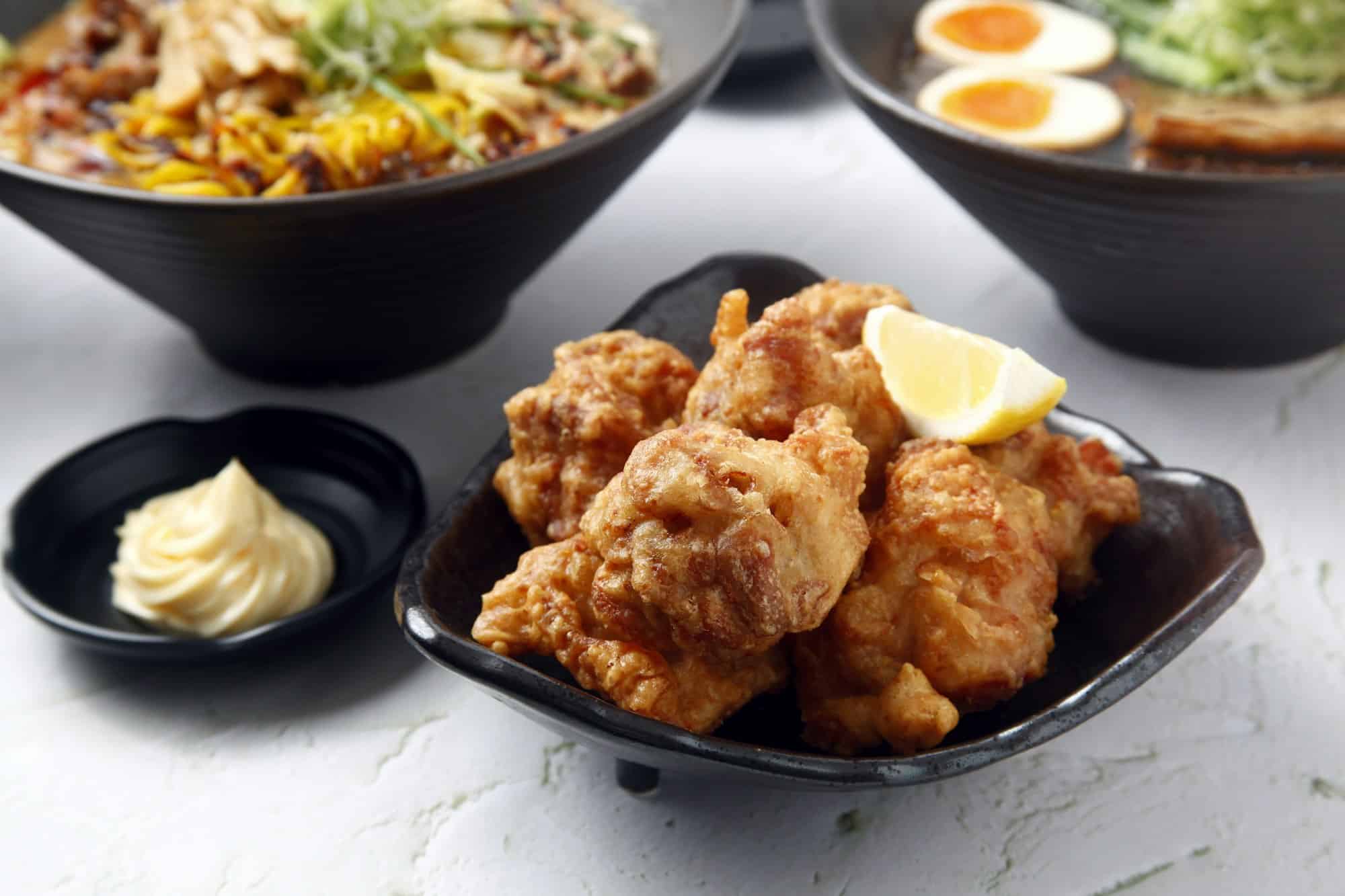How to Achieve Perfectly Crisp and Tender Japanese Karaage Chicken?

Karaage chicken, a staple of Japanese cuisine, is a dish that you will find in restaurants and homes alike. It is cherished not only for its crunchy texture but also for its succulent, flavorful interior. How do you replicate this delightful dish at home? What are the steps to take, and what ingredients will you need? We will explore the secrets to achieving perfectly crisp and tender Japanese karaage chicken.
Understanding the Key Components of Karaage Chicken
Before you begin preparing karaage chicken, it is crucial to understand what makes it so unique. The interplay of flavors, textures, and techniques is what makes this dish a standout.
Topic to read : What’s the Secret to a Crumbly and Buttery Scottish Shortbread?
The main ingredient in this recipe is, of course, the chicken. The chicken pieces are typically thigh meat, preferred for its rich flavor and tenderness. These pieces will be marinated in a blend of soy sauce, sake, and garlic to enhance their taste.
However, the defining characteristic of karaage chicken is its crispy exterior. This is achieved by coating the marinated chicken pieces in a mix of potato starch and flour before deep frying. The potato starch results in a golden, crisp crust that is truly irresistible. The oil used for frying should be carefully chosen, as it can influence the flavor of the final dish.
Also read : How Can You Craft a Flavorful French Bouillabaisse with a Saffron Broth at Home?
The cooking time is also significant. The chicken pieces need just the right amount of time in the oil to ensure they are thoroughly cooked but still juicy and tender. This typically takes around 5 to 7 minutes, depending on the size of the pieces.
The Marinade: A Flavorful Foundation
The marinade is where the flavor journey of karaage chicken begins. A harmonious blend of soy sauce, sake, and garlic, this marinade not only imparts flavor to the chicken but also helps to tenderize it.
Start by combining soy sauce, sake, and finely minced garlic in a small bowl. You will want to let the chicken pieces soak in this marinade for at least 30 minutes, although an hour or two will result in even more flavor. Be sure to turn the chicken pieces in the marinade periodically to ensure an even distribution of flavors.
The choice of soy sauce and sake can also affect the overall taste of your karaage chicken. Opt for a high-quality soy sauce and sake, if possible. The depth and richness of their flavors will significantly enhance your marinade and, ultimately, your finished dish.
Coating and Frying: Achieving the Perfect Crunch
Once your chicken has marinated, it’s time to achieve that signature crispness. The secret lies in the mixture of potato starch and flour.
Firstly, you’ll want to drain the chicken pieces from the marinade. Then, dredge them in a mixture of potato starch and flour, ensuring each piece is evenly coated. This combination creates an ultra-crispy exterior while the interior remains juicy and tender.
Next comes the frying. The oil used for frying can make a significant impact on the flavor of the chicken. Neutral oils such as canola or vegetable oil are typically used as they do not overpower the flavors of the marinade.
The technique of frying also plays a crucial role. Deep frying at the right temperature, usually around 170–180°C, allows the chicken to cook evenly. If the oil is too hot, the outside can burn before the inside is fully cooked. If it’s too cool, the chicken will absorb too much oil, resulting in a greasy texture.
Cooking Time: Finding the Sweet Spot
The frying time for each piece of chicken is arguably one of the most critical steps in the cooking process. Too little time, and the chicken may be undercooked. Too long, and it could become dry and overcooked.
The ideal frying time for karaage chicken is typically between 5 to 7 minutes, but this can vary depending on the size of your chicken pieces. Smaller pieces will require less time, while larger ones will need more. Remember to turn the pieces occasionally to ensure they cook evenly.
Ultimately, the goal is to achieve a deep golden brown color on the outside and a fully cooked, juicy interior. It might require a bit of trial and error to find the perfect cooking time, but the result is well worth the effort.
Serving Karaage Chicken: The Final Touches
Finally, it’s time to serve your perfectly crisp and tender karaage chicken. In Japan, karaage is often accompanied by a tangy dipping sauce and a handful of fresh, crunchy vegetables.
The dipping sauce can vary, but a mixture of soy sauce, mirin, and a bit of citrus juice is a classic choice. The sweet and salty flavors of the sauce brilliantly contrast with the crisp, savory chicken.
As for the vegetables, thinly sliced cabbage or cucumber add a fresh, crunchy contrast to the rich, fried chicken. A squeeze of lemon over the top can bring a bright burst of acidity that balances out the dish perfectly.
With these steps and tips in mind, you will be well on your way to achieving perfectly crisp and tender Japanese karaage chicken.
The Benefits of Using Chicken Thighs for Karaage Chicken
As previously mentioned, in the world of Japanese karaage chicken, the cut of meat you choose is vital to achieving that perfect balance of tender juiciness on the inside and crispy delightfulness on the outside. More often than not, chicken thighs are the preferred choice for karaage.
Chicken thighs are more flavorful and juicy compared to other parts of the chicken. They contain a higher fat content which contributes to their rich taste and succulent texture. The natural moisture in chicken thighs helps to keep them juicy during the deep frying process, ensuring a tender interior.
In preparing chicken thighs for karaage chicken, make sure to get rid of any excess fat or skin. Cut the chicken thighs into bite-sized pieces, keeping in mind that the size of your chicken pieces can impact your frying time. Smaller pieces fry quicker and are more likely to remain juicy, while larger pieces may run the risk of becoming dry if not carefully monitored.
In the world of karaage chicken, chicken thighs are the preferred cut due to their higher fat content and natural tenderness. However, regardless of the chicken cut you choose, proper marination, coating, and deep frying techniques are essential to creating the perfect balance of crispness and tenderness.
Using an Air Fryer for a Healthier Karaage Chicken Alternative
While deep frying is the traditional method for preparing karaage chicken, you can also use an air fryer to achieve a healthier version of this beloved dish. Air frying offers a way to get that irresistible crispy exterior without using much oil.
The process is quite similar to deep frying. After marinating and coating your chicken pieces, preheat your air fryer to approximately 180°C. Arrange the chicken pieces in a single layer, ensuring they don’t overlap. Fry the chicken for about 10 minutes, then flip each piece over and fry for another 10 minutes or until they turn golden brown and crispy.
Although using an air fryer might not give you the exact same texture as deep frying, it can still result in a satisfyingly crunchy exterior. Plus, it’s a great option for those who are mindful of their fat intake.
One thing to keep in mind is that air fryers can vary in their heat distribution and cooking times, so it might take a bit of experimentation to find the perfect cooking conditions. But whether you choose to deep fry or air fry your karaage chicken, the key to success lies in the quality of your ingredients, the marinade, and your frying technique.
Conclusion: Mastering the Art of Karaage Chicken
Perfecting the art of making karaage chicken may seem daunting at first, but with patience, practice, and the right techniques, you’ll be able to recreate this popular Japanese fried chicken dish at home. Remember, the secret lies in the flavorful marinade, the type of chicken cut you use, the blend of potato starch and flour for the coating, and the precise frying time.
Whether you’re using chicken thighs or another chicken cut, whether you’re deep frying or using an air fryer, the goal remains the same: a beautifully golden, crispy exterior and a juicy, tender interior. Serve your karaage chicken with a tangy dipping sauce and some fresh, crunchy vegetables for a satisfying meal that hits all the right notes.
Now that you’ve unlocked the secrets to making perfectly crisp and tender karaage chicken, it’s time to don your apron and start cooking. There’s a world of flavorful, crispy, Japanese fried chicken just waiting to be explored. Enjoy the journey and, of course, the delicious results!
